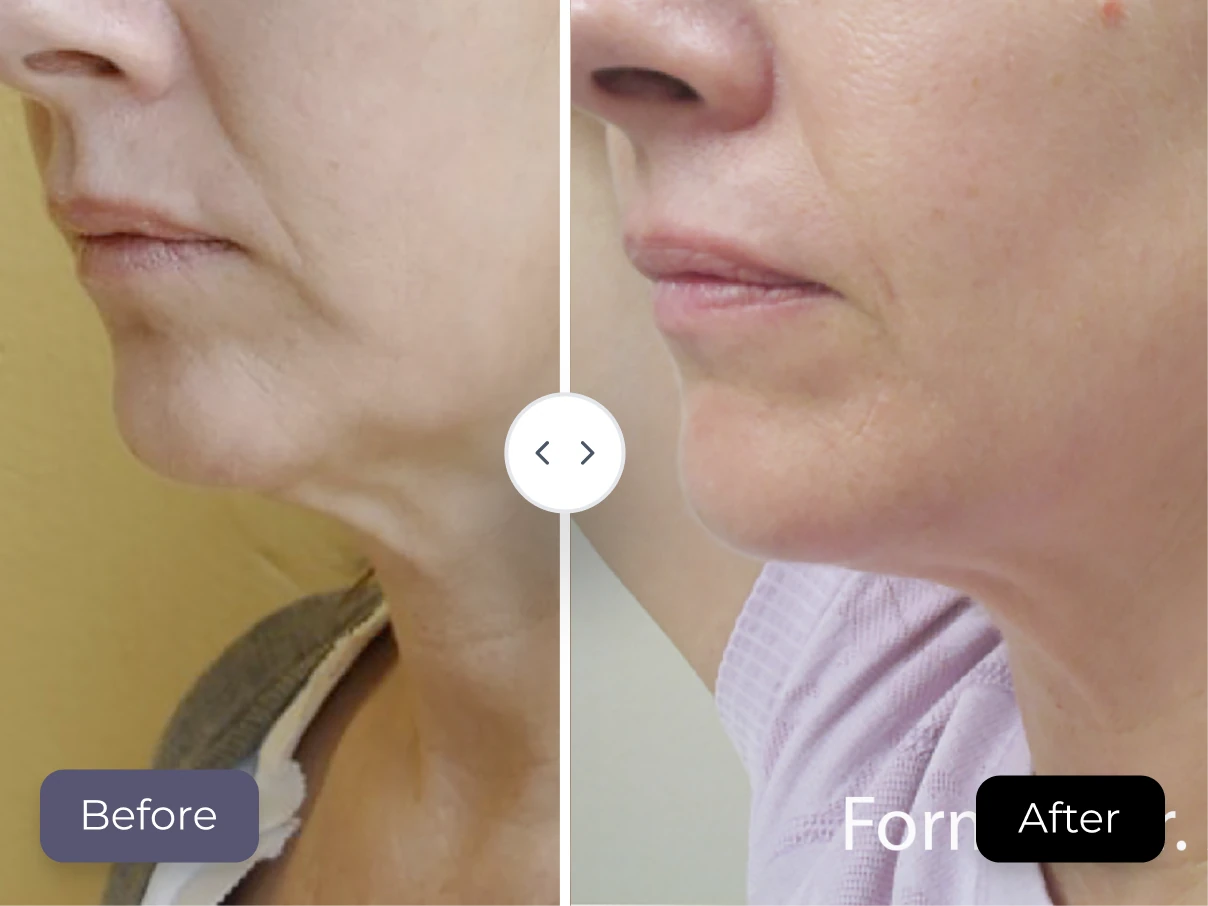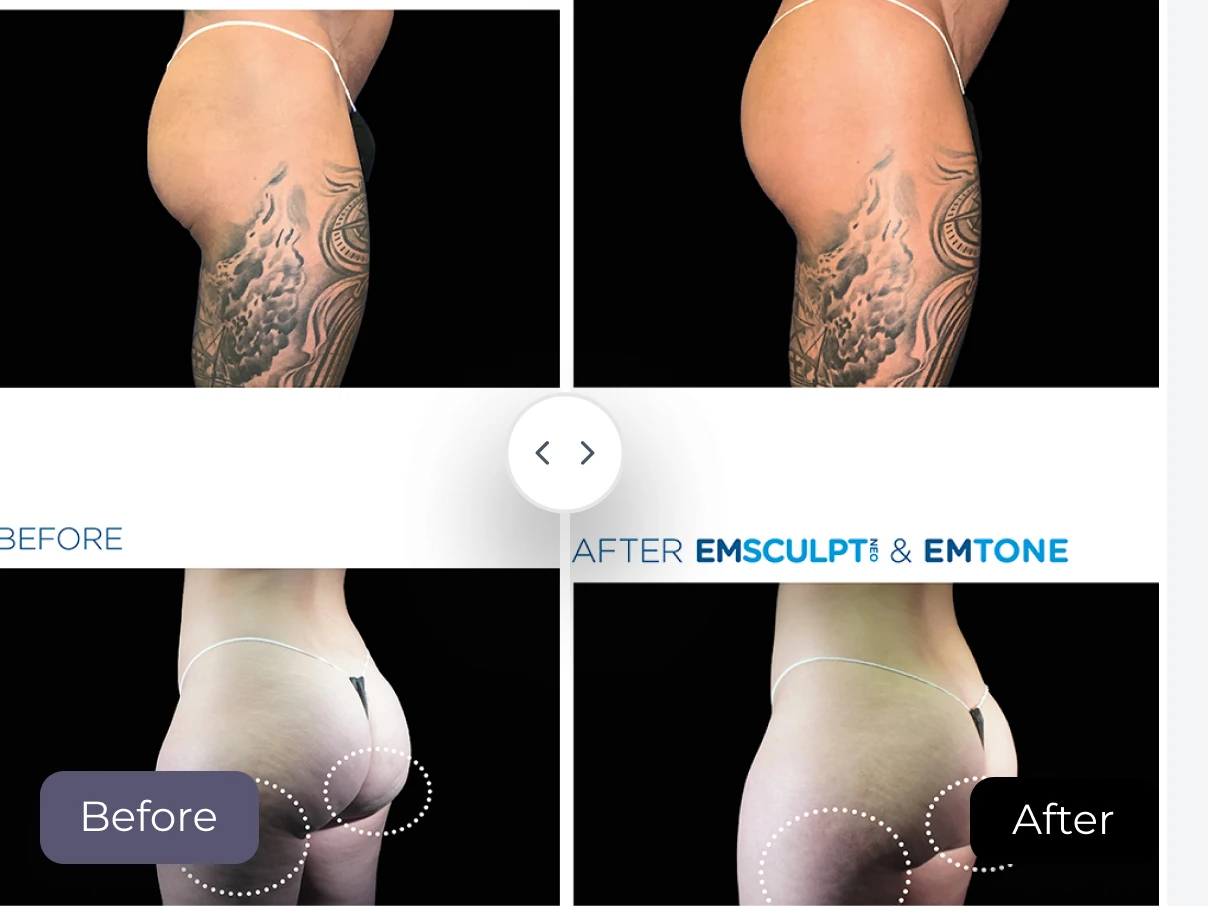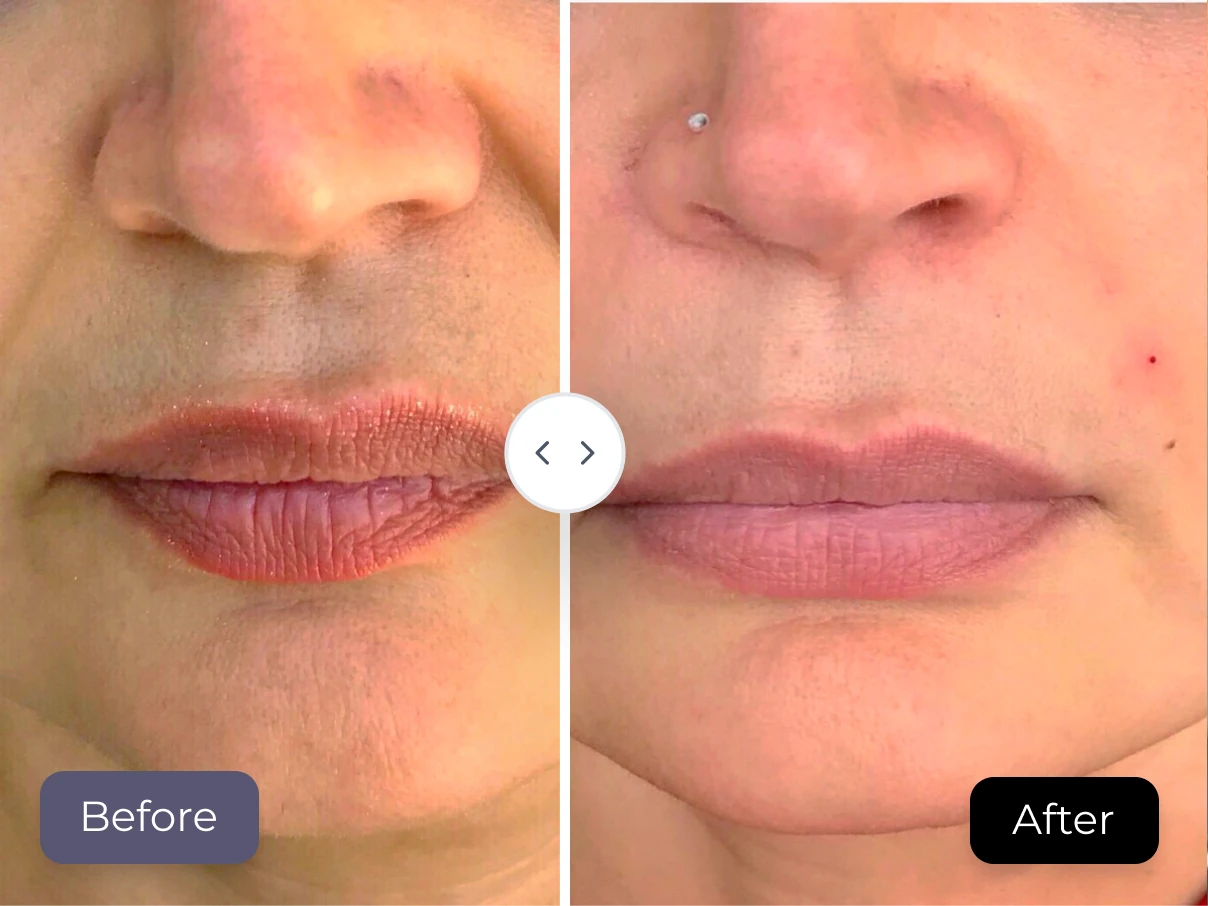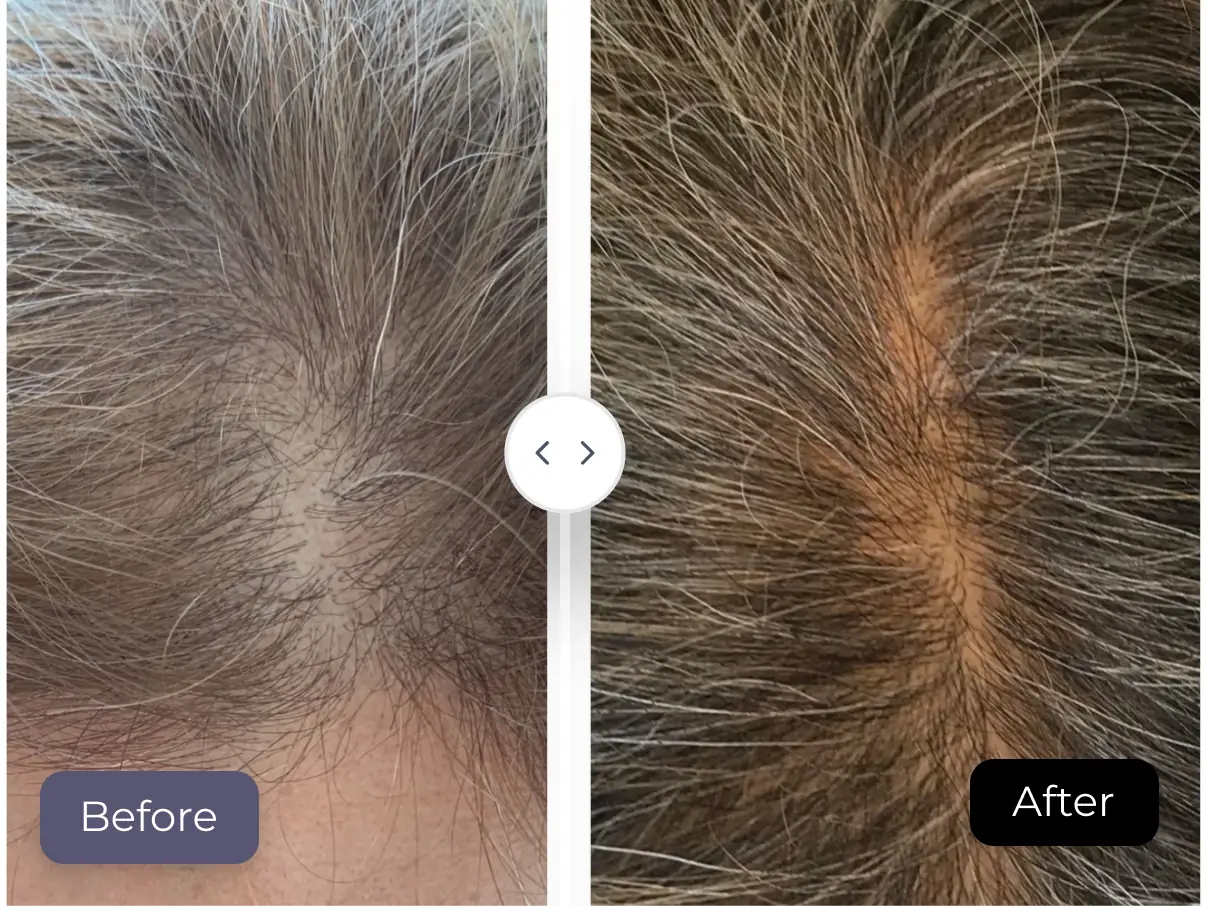At a Glance:
Laser hair removal should never be performed directly over tattoos—it can damage the skin, fade the ink, and distort the design. However, hair surrounding the tattoo can still be treated safely with proper shielding techniques. For hair growing on tattooed areas, alternatives like shaving, waxing, or electrolysis (a permanent option) are recommended. If you’re planning both tattoo removal and laser hair removal in the same area, tattoo removal should come first, followed by a proper healing period. Always consult experienced professionals—like the team at Celebrity Laser & Skin Care in North Vancouver—for safe, personalized treatment.
Laser hair removal and tattoos can be a tricky combination. If you’re thinking about laser hair removal on an area where you already have a tattoo—or plan to get inked later—there are important risks to consider.
Laser hair removal works by targeting pigment in hair follicles. But tattoo ink is also made of pigment. This overlap can cause serious complications if not handled properly. Direct lasering over tattooed skin may lead to fading, distortion, or even burns.
At Celebrity Laser & Skin Care in North Vancouver, we prioritize safety and precision in all laser services. That means understanding when and where laser hair removal is appropriate—and when it isn’t.
This guide breaks down how laser hair removal interacts with tattoos, why precautions matter, and what alternatives are available for safe, smooth results around tattooed skin.
How does laser hair removal interact with tattoos (and why it’s risky)?
Laser hair removal and tattoos don’t mix well. The technology behind laser hair removal is designed to target pigment—specifically, the melanin in hair follicles. But tattoo ink also contains dense pigment, which makes it highly reactive to laser light.
When a laser is directed over a tattooed area, the ink absorbs the energy just like hair does—only more intensely. This can lead to:
- Ink Breakdown or Fading: The laser can scatter pigment particles, causing your tattoo to lose its shape or vibrancy.
- Skin Burns and Blistering: The energy absorbed by the ink may overheat the skin, resulting in painful burns or long-term textural damage.
- Distorted Tattoo Appearance: Patchiness or blurred lines may occur, especially with multicolored tattoos.
Different ink colours react in different ways. Black ink absorbs the most laser energy, making it especially vulnerable to damage. Colored inks (like red, blue, or green) can react unpredictably, depending on the pigment composition.
Skin type also matters—darker complexions require lasers like the Nd:YAG (1064 nm), which penetrate more safely, but the tattooed area still cannot be treated directly.
At Celebrity Laser & Skin Care, we use multiple safe and effective lasers—including Alexandrite 755 nm, Nd:YAG 1064 nm, and ProWave—for permanent hair reduction. These systems are highly precise when used on uninked skin. However, we never treat directly over tattoos due to the risk of serious damage to both the skin and the ink.
➤ Bottom line: If you have tattoos, laser hair removal can still be an option—but never on the tattoo itself.
Can I get laser hair removal if I already have tattoos?
Yes—you can still get laser hair removal if you have tattoos, but not on the tattooed skin itself. The presence of ink changes how the laser behaves, making it unsafe to treat directly over tattoos. However, areas adjacent to tattoos can typically be treated safely.
At Celebrity Laser & Skin Care, technicians will assess your tattoo placement during the consultation and develop a personalized plan to avoid damaging your ink. For example, if you have a tattoo on your forearm, laser hair removal may still be possible on the upper arm, underarm, or hands. But the inked section itself will be carefully bypassed.
To protect your tattoo, trained professionals may:
- Use a stencil, barrier, or cover during treatment
- Adjust the treatment field to exclude the tattooed zone
- Use mapping techniques to ensure no overlap between laser pulses and the ink
If your tattoo is in the middle of the area you want treated—for instance, a large thigh tattoo and full-leg hair removal—your provider will skip the tattooed section and only treat the surrounding hair-bearing skin.
➤ Bottom line: Laser hair removal is still possible with tattoos—but only when performed by qualified professionals who understand how to avoid heat absorption by tattoo pigment.
What are my hair removal options if I have tattoos?
If hair is growing directly over a tattooed area, you’ll need a non-laser solution. Because lasers can’t safely distinguish between ink and hair pigment, alternatives are necessary to avoid burns, fading, or distortion of your tattoo.
Here are your safest options:
Shaving
Shaving remains the simplest and safest method for tattooed skin. It removes hair at the surface level without interfering with the ink. Regular upkeep is required, but there’s no risk of damaging the tattoo.
Waxing
Waxing pulls hair from the root and offers smoother results than shaving. It’s generally safe for tattooed skin once the tattoo is fully healed. However, some clients find it irritating on sensitive or heavily inked areas.
Electrolysis
Electrolysis is the best permanent hair removal option for tattooed skin. It uses a fine probe to apply electrical current directly into individual follicles—bypassing the skin’s surface entirely. Since it doesn’t rely on pigment, it won’t affect your tattoo’s color or design.
At Celebrity Laser & Skin Care, electrolysis may be recommended for small tattooed areas (like wrists, ankles, or shoulders) where laser hair removal is not an option.
➤ Tip: Electrolysis can also be used to clean up borders around tattoos for a neater, more defined look—especially in visible areas.
Read More: Learn more about the differences between electrolysis and laser hair removal
What if I want my tattoo removed as well as laser hair removal?
If you’re considering both tattoo removal and laser hair removal on the same area of skin, careful planning is essential. These treatments use different types of laser technology with distinct energy settings and treatment goals—so they should never be performed simultaneously.
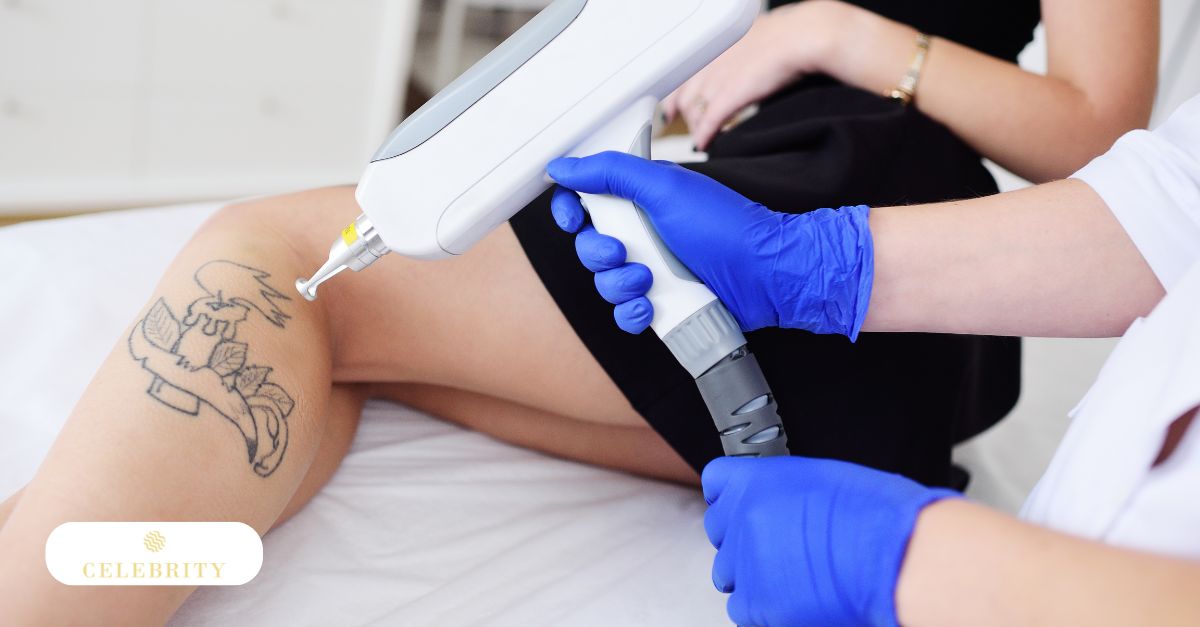
Step One: Tattoo Removal Comes First
Laser tattoo removal must be completed first. The laser used in tattoo removal (typically a Q-switched or picosecond laser) targets the ink particles embedded deep in the dermis, breaking them down for the body to absorb and clear. Attempting laser hair removal before this process is complete can interfere with ink dispersion, cause burns, or distort the tattoo mid-fade.
Step Two: Allow Time to Heal
After your final tattoo removal session, the skin needs time to fully heal before any additional laser treatment. This period allows inflammation to subside and helps prevent irritation, hyperpigmentation, or scarring during your future hair removal sessions.
Step Three: Reassess the Area for Hair Removal
Once the skin has healed—usually several weeks to a few months, depending on the extent of removal and your skin’s response—a professional consultation is required. Your technician will evaluate whether the area is now safe for hair removal and what laser settings are most appropriate.
➤ Important: Even after tattoo removal, some residual pigment may remain. A skilled technician will assess whether the area is safe to treat and may recommend spot tests or alternative methods in borderline cases.
How do technicians avoid tattoos during laser hair removal?
When performing laser hair removal on clients with tattoos, experienced technicians take extra precautions to protect the inked skin. Since laser devices can’t distinguish between hair pigment and tattoo pigment, avoiding direct contact with tattoos is critical to prevent burns, fading, or distortion.
Tactical approaches used by professionals include:
1. Mapping the Treatment Area Carefully
During your consultation, the technician will examine the location, size, and shape of your tattoo. A precise treatment plan is created to define the safe zones where the laser can be used without risk.
2. Shielding the Tattoo
The tattooed area is covered with a physical barrier—such as a white medical-grade stencil, gauze, or adhesive dressing—before treatment begins. This prevents accidental laser exposure to the inked skin.
3. Skipping the Tattooed Section Entirely
Even with shielding, the laser will not be passed directly over any part of a tattoo. The laser is guided around the tattooed area with controlled, measured movements to ensure safe and effective treatment of nearby hair without compromising your body art.
4. Adjusting Laser Settings Appropriately
If the tattoo borders closely on the treatment area, your provider may adjust the fluence (energy level) or pulse duration to reduce scatter, ensuring both safety and precision.
At Celebrity Laser & Skin Care in North Vancouver, all treatments are performed by clinically trained providers who understand how to balance aesthetic results with skin safety. Whether you have a small inked design or a full sleeve, we’ll build a plan that avoids laser contact with your tattoos—without compromising your hair removal goals.
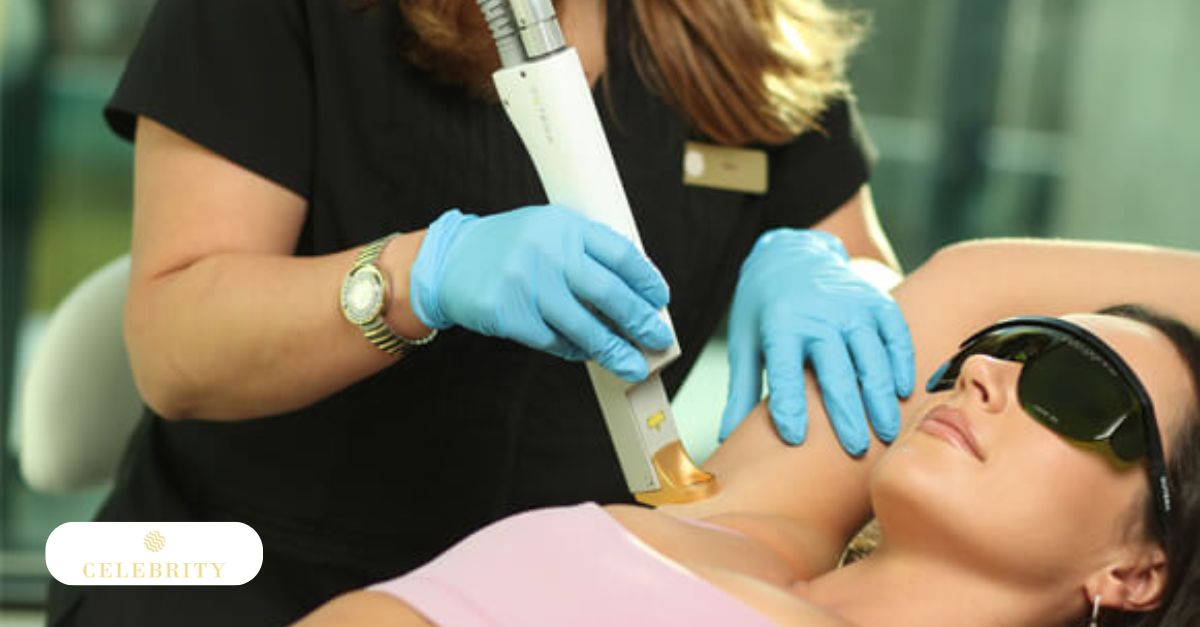
Am I a good candidate for laser hair removal at Celebrity Laser & Skin Care?
Laser hair removal is safe, effective, and long-lasting—but it’s not a one-size-fits-all solution. At Celebrity Laser & Skin Care, we assess each patient individually to ensure the technology is right for your skin, hair, and tattoo profile.
You’re likely a strong candidate if you:
- Have fair to medium skin tones (for Alexandrite or Prowave laser) or darker complexions suited to our Nd:YAG 1064 nm laser.
- Have dark, coarse hair in the area you’d like treated.
- Want to reduce hair growth on non-tattooed skin (we do not treat directly over tattoos).
- Are looking for a non-invasive, low-downtime solution to long-term hair reduction.
- Are not pregnant and do not have active skin infections in the treatment area.
Special Considerations for Tattooed Clients
If you have tattoos near or on the area you want treated, you may still be eligible for laser hair removal—with adjustments. We will carefully avoid tattooed skin and create a custom plan that safely treats the surrounding areas. If laser treatment isn’t suitable for certain zones, we’ll recommend alternatives like electrolysis.
What if I’m unsure?
That’s exactly what your consultation is for. During your visit to our North Vancouver clinic, one of our certified laser technicians will assess your skin tone, hair density, medical history, and tattoo placement to determine if you’re a good candidate. We’ll also walk you through your options, expected results, and pricing so you can make an informed decision.
Conclusion
Laser hair removal and tattoos don’t always play well together—but that doesn’t mean smooth, hair-free skin is out of reach if you have ink.
While laser technology is highly effective for reducing unwanted hair, it should never be applied directly over tattooed skin. Doing so can lead to ink distortion, burns, or permanent skin damage. The good news? With expert guidance, you can still treat surrounding areas safely—and manage tattooed skin with alternative methods like shaving, waxing, or electrolysis.
At Celebrity Laser & Skin Care in North Vancouver, our team understands the unique balance between long-term hair removal and tattoo preservation. We use industry-leading Alexandrite, Nd:YAG, and Prowave lasers and apply careful techniques to protect inked areas while still delivering exceptional results elsewhere.
If you have tattoos and are considering laser hair removal, book a personalized consultation today. Our experienced technicians will map out a safe, effective plan tailored to your skinRRR type, tattoo placement, and long-term goals.


